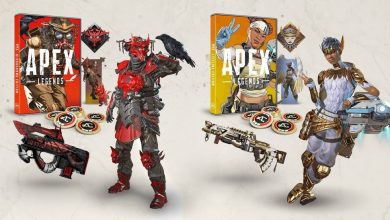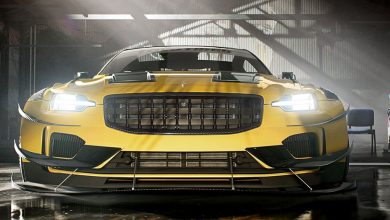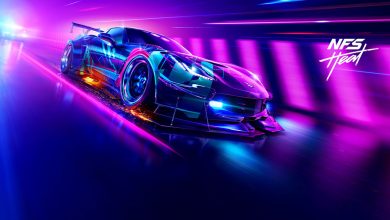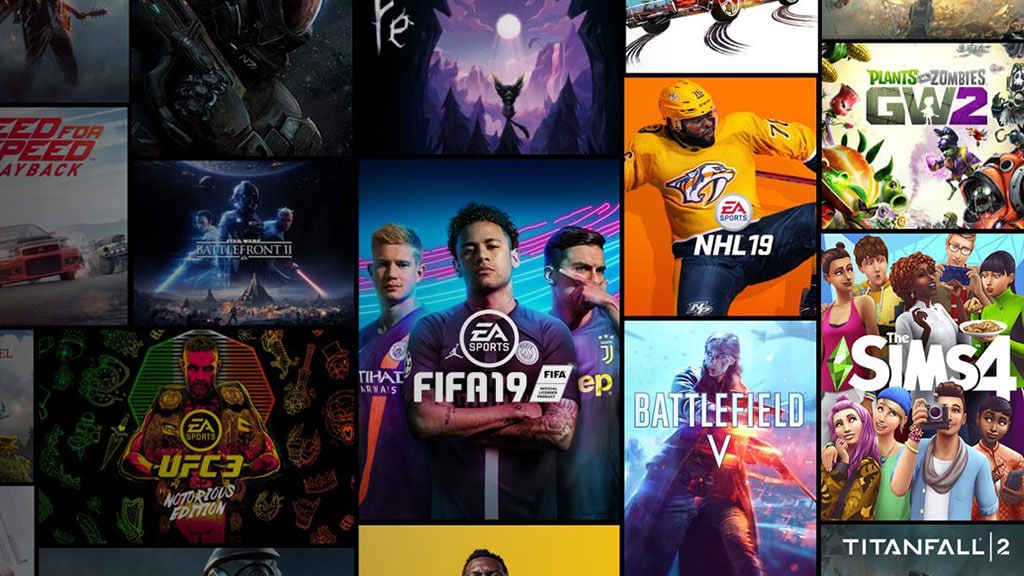![]() At Games Convention Asia in Singapore, IndianVideoGamer caught up with Tom Farrer, Producer of Mirror’s Edge, one of the most eagerly-awaited titles of the year, for a leisurely chat. Probably everything you’ve ever wanted to know about Mirror’s Edge has been discussed here, including the time trial mode, multiplayer, boss fights, working with the Unreal engine, DLC, sequels, and possible ports to other platforms.
At Games Convention Asia in Singapore, IndianVideoGamer caught up with Tom Farrer, Producer of Mirror’s Edge, one of the most eagerly-awaited titles of the year, for a leisurely chat. Probably everything you’ve ever wanted to know about Mirror’s Edge has been discussed here, including the time trial mode, multiplayer, boss fights, working with the Unreal engine, DLC, sequels, and possible ports to other platforms.
So the game’s got a time trial mode with ghosts?
Yes, the way it works is you run a stretch and as long as you beat a fixed qualifying time, your ghost will be uploaded automatically. It’s also saved locally. Each time trial area has got three star ratings, with three stars being the most difficult to beat. The maximum star rating a player can get in the game is 57 stars, I believe. None of us have actually managed to get there.
[singlepic=169,450,315,center]
What chance do we have then?
Actually, when we made Rallisport Challenge, the guys actually set their times, took the best times they could get, and they cut a few seconds off them. Those times got beaten in about three days after the game launched. So I think we’ll be alright.
One thing that was very interesting was that I played through the level on the show floor and then someone else played it after me and took a completely different approach to it. There are so many ways you can go through this level.
That’s something I’ve been trying to emphasise when I talk to people. Even in the smaller areas, there are ways in which you can combine moves to pull of some really cool stuff. I like having that ability. Actually, the time trial on that particular level is set on the second half of the level. And just when we thought we had found all the different routes and approaches to go though the level, a few weeks ago someone found another way. It was an approach I would never have thought of.
Hit the jump for the rest of the interview
So what does Mirror’s Edge have in terms of online modes?
The time trail; that’s the only online mode.
No co-op?
No.
That would’ve been cool though?
That would have been really cool. The whole concept of making the game is kind of tricky. We’ve done a lot of new stuff here, so the more things you try to do, the more crap you end up putting out. We looked at some multiplayer stuff and we pretty soon found that the traditional versus multiplayer just didn’t work. It didn’t fit the game and it was really just weird. We had to evaluate how much time we wanted to spend working on all of her first person animations, which is the core of the game, versus having to animate millions of third-person animations for multiplayer. Also, when it comes to melee in a multiplayer environment, all of the stuff that looks really, really good, feels really, really bad, because almost 90 per cent of a melee animation is about the reaction rather than the action itself. So the minute you do a second or two-second long reaction animation, it’s just annoying because you lose control. There are a load of problems that we would need to overcome to get that working, so we decided it was best to focus on getting the game to be good doing what it does. Also, time trial was just the perfect fit, especially with the ghosts so you get to race and compete with your friends. And it’s horribly addictive.
[singlepic=143,400,center]
Visually, the game is quite stunning. But initially when it was announced that you were using Unreal, I thought, ‘Oh, its going to be all brown and grey’.
Yeah, with lots of bloom (laughs).
And then we see the screenshots and videos and it’s so refreshing to see so much white and primary colours. So how did you arrive at that sort of visualisation?
The first thing is we wanted to make something different and we wanted a game that looked clean, rather than dirty. When we started, it still looked really realistic, but we still had the aspiration to work with the brighter colours and cleanliness. The first time we built an art area, it looked really nice, but it didn’t get us very excited; it just looked really nice and too normal. Then we went back and took a much more conceptual and artistic look at it, and its really the kind gameplay that informs where we’ve ended up with the art direction, because the clean world is also perfect for seeing all the opportunities within the environment. I actually remember that when we decided to go with the white, I was talking to Johannes Soderqvist, who’s the art director. We were looking at this concept, and I said, ‘Okay, let’s do that!’ And he was like, ‘This is awesome!’ (laughs). We still have all the textures and the detail, but it’s just all white. If there was some sort of button, it would be interesting to push it and just see if we switched the textures back, what they would look like.
You also have a new lighting engine for this game?
Yes, we’ve been co-developing the integration of the Beast lighting engine from a Swedish company called Illuminate Labs. We’ve been working with them on that and integrating that into Unreal. It’s a great lighting engine; it’s very powerful, and its one of the reasons why the game looks so different. The way it works is, we have this white world and we put blue on the wall. So when the light from the sun hits the blue, it reflects blue light. We can control how all of that works and we can jack it up so we get this beautiful wash of colour that bleeds over the white. Even though we don’t use too many colours – there are about 7 colours in the full game – you get various tones and variations of colour. That’s one of the things that make the game look like it does. We were just so fed up with all the brown.
[singlepic=144,400,296,center]
Did you ever consider making Mirror’s Edge in third-person?
No, never. The whole point was to do it in first-person. I love Prince of Persia, but that’s been done. We wanted to make something that was new. We just wanted that feeling of catching hold of the edge. Third-person is a different kind of cool. It’s cool to see the move itself, but in first-person it’s like feeling the move. When you jump and you’re about to fall short of the ledge, you think ‘Oh, I’m about to miss’, rather than ‘Oh, my avatar is about to miss’. I’ve been wanting to play a game other than Mirror’s Edge for so long, but I haven’t been able to do so because it’s been so busy. But recently, I played another first-person game, which I won’t mention, and it felt really weird because I’ve been playing Mirror’s Edge for so long. It was strange to go back to a static floating camera. I got used to it after a while, but initially it was so jarring because I didn’t get the feel of the feet and the body.
You guys have done a lot of work to avoid people getting motion sickness while playing the game. Can you tell us a little bit about that?
Actually, its not motion sickness; its simulation sickness. Motion sickness is about physical motion. Simulation sickness is the absence of motion but the appearance of it. I get it quite badly myself.
Really? While playing this game?
No. When we started, we knew that simulation sickness could be a problem for us because we wanted to do a lot with the camera. We started looking into it and what causes it, which is pretty interesting but also difficult because it affects different people differently. So we just started pulling together all of the things that would help solve it. The first thing was the reticule. In most first-person games it’s just attached to the centre of the camera. We quickly found out that that wouldn’t work because when we started animating the camera it started moving around and being really annoying and distracting. So now, it’s partly attached to the camera controlled by a focal point in the distance, which kind of steadies it out but allows it to move. But we still need it to be pretty stable in the centre so you can focus your eyes.
You don’t ever look at everything all at once. That’s why you can still get simulation sickness if you’re playing a third-person game, particularly if it doesn’t use a reticule, because the screen is 2D but your brain is trying to process it all at once in 3D. That just f**ks up your head. So the dot just helps you focus your eyes around the screen. A couple of years ago, I was playing a first-person game, which I won’t mention, which had a really narrow field of view; it was something like 40 degrees. That’s really, really tight so you would lose perception of where you are in relation to everything else and that can really make you feel lost, confused and nauseous. So we opened the field of view about as far as we could before it started to bend, which is good because you get a much better sense of peripheral vision and where you are in the world and in relation to everything else. The only problem is technical. The reason a lot of games do it is because the narrower your field of view, the less you have to render and the easier it is to make. That was a problem for us because we had to render a really wide field of view. Luckily our coders are very clever (laughs).
[singlepic=159,400,300,center]
The biggest thing, however, is the camera control. That’s related to expected outcome and degree of control. So every time your mind expects something to happen, it needs to happen. For instance, if you’re falling from a height and you expect the screen to move or bob and it does, that’s good and the brain is happy and you can continue playing. We learned that there are certain things you can do with the camera that will guarantee to get you sick. Faith’s got a spine, a neck and shoulders and we had to build quite a different first-person rig to get her to do all this stuff. So we worked with her shoulders and saw how it affected her head, and we quickly found that that plane of movement would never ever work. It looked really nice, but it made me feel sick in about 15 seconds. So we changed that and adopted the current plane, which works way better. It’s all about tweaking, testing and balancing it.
We were also worried about the parachute roll and that it would make people sick. Then we thought about ballet dancers; when they do pirouettes, they keep snapping their head back to a certain focal point. So we worked the animation in a way that when you triggered it, she would snap around and end up looking in the same place. So we’ve spent a lot of time thinking about that.
So besides the reticule, there’s no HUD?
No. We’re really kind of allergic to having anything on the screen. We really didn’t even want to do any of the loading icons on the screen, but it’s a requirement so we have to do that.
Is the game cutscene-heavy? Are there many cutscenes between missions?
There’s a curscene between every single level and then there usually bits of in-game cutscenes within the levels themselves. In between, we always use 2D animation. The ones in-game are in-engine. All the in-engine cutscenes are in first-person as well, so you’ll never really see Faith in third-person. After you finish one of the chapters in the game, the game can get a bit tiring because you have to concentrate, particularly if you’re being chased a lot. So it’s nice at the end to just be able to sit back and relax and watch a scene.
[singlepic=165,400,300,center]
The game doesn’t encourage you to engage in combat or use weapons although they are there. That’s new.
I can think of only two encounters in the whole game that you pretty much have to fight.
By fight do you mean using weapons or hand-to-hand?
You never have to shoot. Later on it gets quite hard not to because if you can get a rifle, it’s very powerful. So when you have lots of enemies or powerful enemies, it does make it easier to use a weapon. But you’re just not as cool (laughs).
Will there be a crosshair when you have a gun with you?
We initially just left the reticule on there. But during play-testing, we found that people were having trouble with it. So now when Faith picks up a weapon we’ve added an extra circle around the dot so it feels a bit more like a traditional crosshair. But people play differently. Most of the people at work remove the reticule and leave the crosshair for the gun. And some people turn both off and play with nothing. I play with both, because I like the dots (laughs). But you never have to shoot or use a weapon. But it can be difficult to avoid combat completely, particularly on the first playthrough, because you need to move fast and use movement to find routes to get away from enemies. But we never force you to use a gun to shoot anyone.
Even in this level here, momentum seems very important because if you miss one jump or if you hit a barrier on your way, you lose speed and it makes it harder to get away from the enemy.
We’ve actually made it a little harder in this build. We’ve been working on some of the AI and their behaviour when they’re chasing you. They’re more aggressive.
Next Page: DLC, sequels, boss fights, ports, etc.



